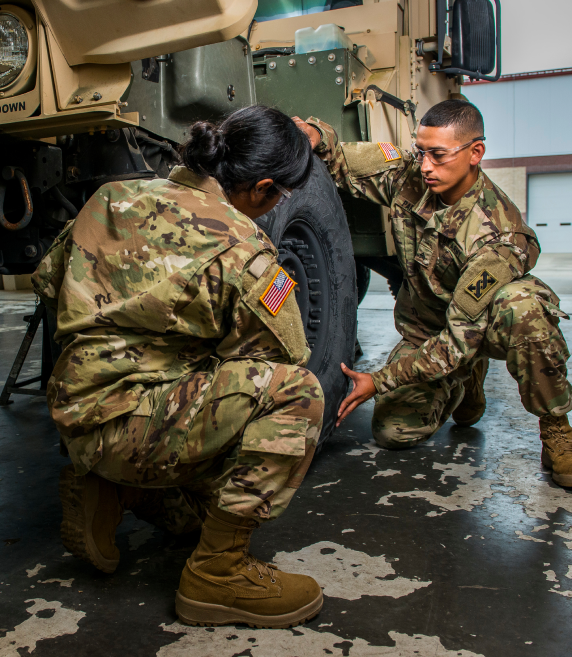24-month deployment stabilization
Get up to 24 months of deferment from involuntary mobilization to help you and your family establish your new civilian life.
Explore the benefits of the Army Reserve and learn the steps involved to help you begin your transition from active duty.

We provide the resources and flexibility you need to achieve your goals—civilian and Army.
Get up to 24 months of deferment from involuntary mobilization to help you and your family establish your new civilian life.
Choose a unit near home or relocate to a location you want with your MOS to pursue your civilian career, go back to school, and see loved ones.
Access our Student Loan Repayment Program , the GI Bill , and other educational benefits to help achieve your goals.
Earn up to $20K in bonuses when you transition and use it to help you and your family adjust to your new life and build the future you want.
Keep your current MOS or choose from over 120 Army Reserve specialties to further your Army and civilian careers.
Get assistance securing a civilian job through the VA’s online Veterans’ Employment Center(Opens in new window) and P3 Private Public Partnership(Opens in new window) program.
Joining the Army Reserve makes you and your family eligible for Tricare Reserve Select(Opens in new window)—our low-cost health care insurance plan.
You’ll transition with your current rank, but you can apply for a direct commission or the Warrant Officer program.
When you transition to the Army Reserve, the years you’ve already served carry over and are applied towards your 20-year retirement.
If you’re nearing the end of your service obligation, you may gain options to reduce your total military commitment by transitioning.
It changes a little based on if you are reaching ETS & Retirement, Enlisted Separation, or Officer Separation—but these steps will help you navigate the process with your Reserve Component Career Counselor (RCCC).
A year from ETS, an Active Component Retention NCO will reach out to see if you’re interested in the Army Reserve. Once you give notice of your desire to transition, you will have 12 – 18 months if a Soldier with voluntary ETS, up to 24 months if a retiree, or up to 9 months if an Officer to complete the process.
We recommend you start planning 12 months prior to separation since it can take time and you have nine months from your day of separation to complete.
The ETS process is conducted under the VOW Act and starts with the completion of DD Form 2648.
The Soldier For Life-Transition Assistance Program (SFL-TAP) helps you prepare for civilian life through counseling, training, job-search services, and more. You can use the DoD Transition Assistance Program (TAP) for additional assistance.
We recommend you start your discussions 365 days from ETS if you are ETS & Retirement, and 279 days out if enlisted or an Officer.
For job-search assistance, you and your family also have access to the P3 Private Public Partnership program. Contact the P3O team for more information.
Each Soldier must receive Continuum of Military Service Opportunity Counseling, which goes through all the benefits of serving in the Army Reserve in detail. This includes: pay, retirement, Tricare, reasons to join, RCCC locations, and other helpful info.
Your RCCC is an expert on transitioning to the Army Reserve. Your initial meeting will be a 45-minute counseling session where you’ll discuss your career goals, location, branch/AOC, and benefits to help ensure all your needs are met.
Officers will also meet with their Silver Siege Officer. The Silver Siege Program helps active-duty Officers transition, your Silver Siege Officer will help you find Officer positions and assist your RCCC in facilitating your transition.
Once you decide to transition to the Army Reserve, a contract that specifies your chosen location will begin one day after your active-duty obligation is complete. You can change your mind up to 91 days prior to the start of your contract.
Active-duty Soldiers can contract with the Army Reserve up to 180 days prior to ETS, regardless of installation location, and begin MOS reclassification.
Soldiers usually get four days to clear their post. This includes going to various places around the base, getting signatures, and returning equipment. Once complete and all paperwork has been finished, including the TAP 21 Report and DD Form 214, you can clear the post.
Connect with your RCCC to learn more about transitioning to the Army Reserve!
You have no saved jobs.
Take a short quiz or explore more than 200 jobs that might interest you.
Army Career Match